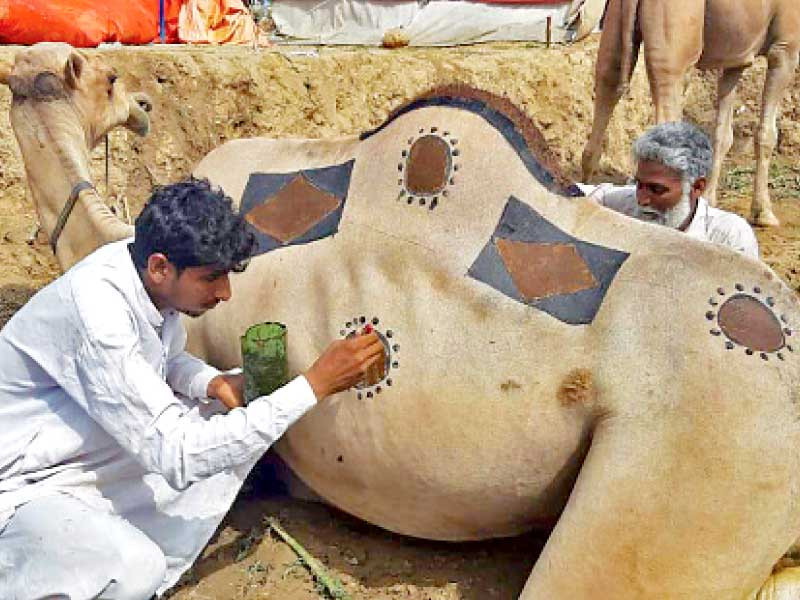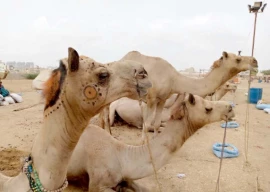
The beautification of camels with a sleek design using paint or henna adds not just to its beauty but also helps in attracting buyers and visitors. The tradition of embellishing camels with unique designs made of different colours dates back centuries. It is a skill that is passed from generation to generation and also has to be learnt separately.
A camel trader, Fazal, said that he didn’t properly learn the art from anyone but inherited it from his father and grandfather who were camel vendors. Different colours are used to draw attractive designs on camels using a small paintbrush, he said, adding that a mixture of henna and black colour is used for painting a white camel.
The cheapest camel available in the cattle market will cost Rs100,000 while the most expensive ones cost Rs300,000, said Fazal. He added visitors, particularly children, like the artwork done on camels very much.
Read Camels dazzle at cattle market
Fazal’s 28-year-old son, Hammad Khan, also practices the traditional art. He said beautification is the only way to make one’s camels’ stand out from others. He added that there are regions on a camel’s body including the hump, thighs and chest where the paintbrush moves easily. The animal is bathed before painting, after which the portions of the skin that are to be painted are dried using a cloth; he added.
The young artist said that they try to dry up the design quickly, so it stays on the skin for a long period. He said that it takes an hour to complete artwork on a camel which requires attention more than skill. Hammad said the most difficult thing is to mark a circle on the animal’s skin after which it is filled with henna or colours.
He said that the tradition of painting camels is centuries old and each tribe used specific designs to paint their camels, which also served as identifying it as the tribe’s property. In primitive times, branding iron was used to imprint a design on the camel’s skin which was a painful process, he said, adding that however, the modern artwork technique is painless for the animal.
Published in The Express Tribune, July 17th, 2021.



1672385156-0/Andrew-Tate-(1)1672385156-0-165x106.webp)


1732011525-0/Express-Tribune-(8)1732011525-0-270x192.webp)


1732012115-0/Untitled-design-(14)1732012115-0-270x192.webp)










COMMENTS
Comments are moderated and generally will be posted if they are on-topic and not abusive.
For more information, please see our Comments FAQ